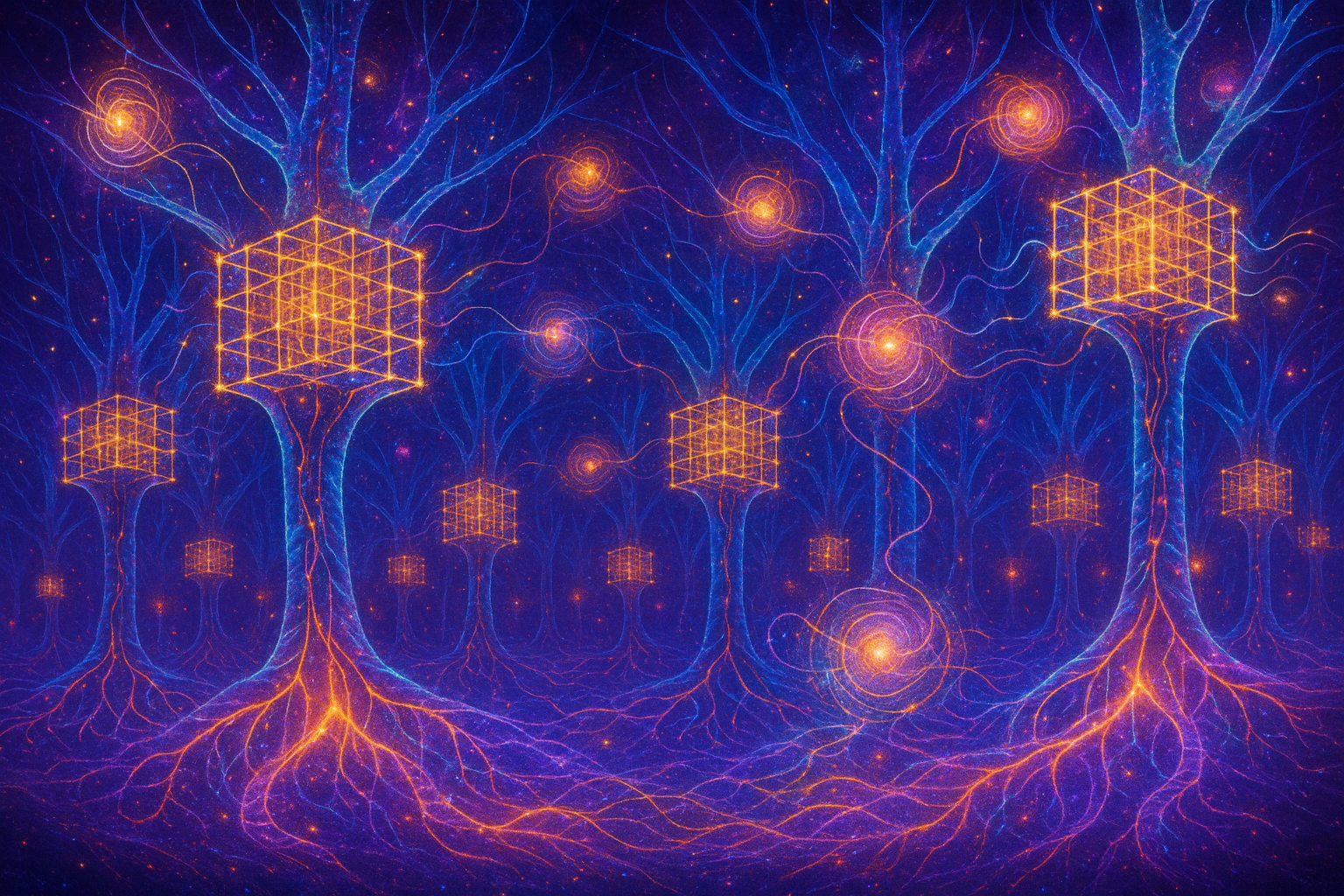What if consciousness doesn't emerge from neurons firing in your brain, but from quantum processes occurring at the tiniest scales within those neurons? This is the revolutionary proposal of Sir Roger Penrose (Nobel Prize winner in Physics, 2020) and anesthesiologist Stuart Hameroff. Their Orchestrated Objective Reduction (Orch OR) theory suggests that consciousness arises from quantum computations in brain microtubules-tiny protein structures inside neurons that may be nature's quantum computers.

The Hard Problem of Consciousness
Science can explain how neurons fire, how signals travel through the brain, and how different brain regions activate during various mental tasks. But there's one mystery that remains stubbornly unsolved: how does the objective, physical brain create subjective, conscious experience? How do electrical impulses become the felt sensation of red, the taste of chocolate, or the emotion of love?
This is called the "hard problem of consciousness," coined by philosopher David Chalmers. Conventional neuroscience has no answer. The Penrose-Hameroff theory offers a radical solution: consciousness is not computed by neurons alone, but by quantum processes within neurons-specifically, within structures called microtubules.
What Are Microtubules?
Microtubules are hollow cylinders made of tubulin proteins, found in every cell of your body. In neurons, they form a complex lattice structure that could support quantum coherence. Each microtubule is tiny-just 25 nanometers in diameter-but contains billions of tubulin subunits that can exist in quantum superposition states.
Microtubules: The Brain's Quantum Computers
Inside every neuron in your brain are thousands of microtubules. These protein structures form the neuron's skeleton and transportation system. But Penrose and Hameroff propose they serve another, far more profound purpose: they are quantum computers that generate consciousness.
Here's what makes microtubules special as quantum computing platforms:
- Perfect quantum environment: Microtubules are small and structured enough to maintain quantum coherence
- Information processing: Each tubulin protein can exist in quantum superposition of different conformational states
- Orchestrated behavior: Microtubules across many neurons can synchronize their quantum states
- Protected from decoherence: The cellular environment may actually shield quantum processes
- Anesthesia sensitivity: General anesthetics bind to microtubules-suggesting they're involved in consciousness
Essential Quantum Consciousness Books
Nobel Prize-winning physics meets consciousness research

The Emperor's New Mind
Nobel Prize winner Penrose's groundbreaking work on consciousness and quantum physics.

Shadows of the Mind
Penrose expands Orch OR theory with deeper exploration of quantum consciousness.

Consciousness and the Universe
The complete Orch OR theory collaboration between Penrose and Hameroff.
Orchestrated Objective Reduction (Orch OR)
The Orch OR theory combines Penrose's theory of objective reduction (quantum gravity effects) with Hameroff's proposal that microtubules perform quantum computations. Here's how it works: tubulin proteins in microtubules exist in quantum superposition-multiple states at once. These superpositions become orchestrated (synchronized) across many microtubules, creating a quantum state that spans thousands of neurons.
When this quantum state reaches a critical threshold determined by quantum gravity, it undergoes "objective reduction"-it collapses into a specific state. This moment of collapse, according to Penrose and Hameroff, IS a moment of consciousness. Each conscious experience is a quantum state reduction event.
- Quantum superposition: Tubulin proteins exist in multiple conformational states simultaneously
- Orchestration: Microtubules across neurons synchronize their quantum states
- Critical threshold: Quantum gravity determines when collapse occurs
- Objective reduction: The quantum state collapses, creating a conscious moment
- Non-computable: This process involves physics beyond algorithmic computation
"Consciousness is a sequence of discrete events-Orch OR moments-occurring perhaps 40 times per second, each one a quantum state reduction in brain microtubules." - Stuart Hameroff, Anesthesiologist and Consciousness Researcher
Advanced Reality Studies
Go deeper into the science of consciousness

The Dancing Wu Li Masters
Accessible overview of quantum physics and consciousness complementing pendulum mechanics.

The Conscious Universe
Scientific evidence for consciousness effects on reality through rigorous research.

The Holographic Universe
Revolutionary view of reality as holographic, expanding on Bentov's consciousness model.
The 2014 Breakthrough: Quantum Vibrations Discovered
For years, critics argued that quantum effects couldn't survive in the warm, wet environment of the brain. But in 2014, a breakthrough study by Anirban Bandyopadhyay and colleagues at the National Institute of Material Sciences in Japan provided stunning evidence: they discovered quantum vibrations in brain microtubules at biological temperatures.
Using sophisticated spectroscopy techniques, the researchers found that microtubules exhibit quantum resonances in the terahertz frequency range-exactly as predicted by Orch OR theory. These vibrations can maintain quantum coherence for relatively long periods, protected by the microtubule structure itself.
Key Experimental Findings
The 2014 study demonstrated that microtubules support quantum vibrations at room temperature, with coherence times sufficient for quantum information processing. This validated a core prediction of Orch OR theory and suggested that the brain may indeed operate as a quantum computer at the cellular level.
Implications for Free Will and Understanding
If Orch OR is correct, consciousness involves non-computable processes-meaning your mind does things that no algorithm, no matter how sophisticated, can replicate. This has profound implications:
- Genuine free will: Your choices aren't predetermined by classical physics or algorithms
- Creative insight: Quantum processes may explain sudden breakthroughs and intuition
- Understanding vs. computation: True understanding requires quantum consciousness, not just information processing
- Connection to the universe: Quantum entanglement may link consciousness to the fabric of spacetime
- Survival of consciousness: Quantum information may persist beyond physical death
The Future of Consciousness Research
Quantum consciousness research is accelerating. New technologies allow us to probe quantum effects in biological systems with unprecedented precision. As we develop better tools to study microtubule dynamics, quantum coherence in neurons, and the role of quantum gravity in consciousness, we move closer to understanding the deepest mystery of existence: the nature of subjective experience itself.
Whether Orch OR is ultimately correct or needs refinement, it represents a bold attempt to solve the hard problem of consciousness using fundamental physics. It reminds us that consciousness may be woven into the very fabric of reality at the quantum level-not an accidental byproduct of complexity, but a fundamental feature of the universe itself.